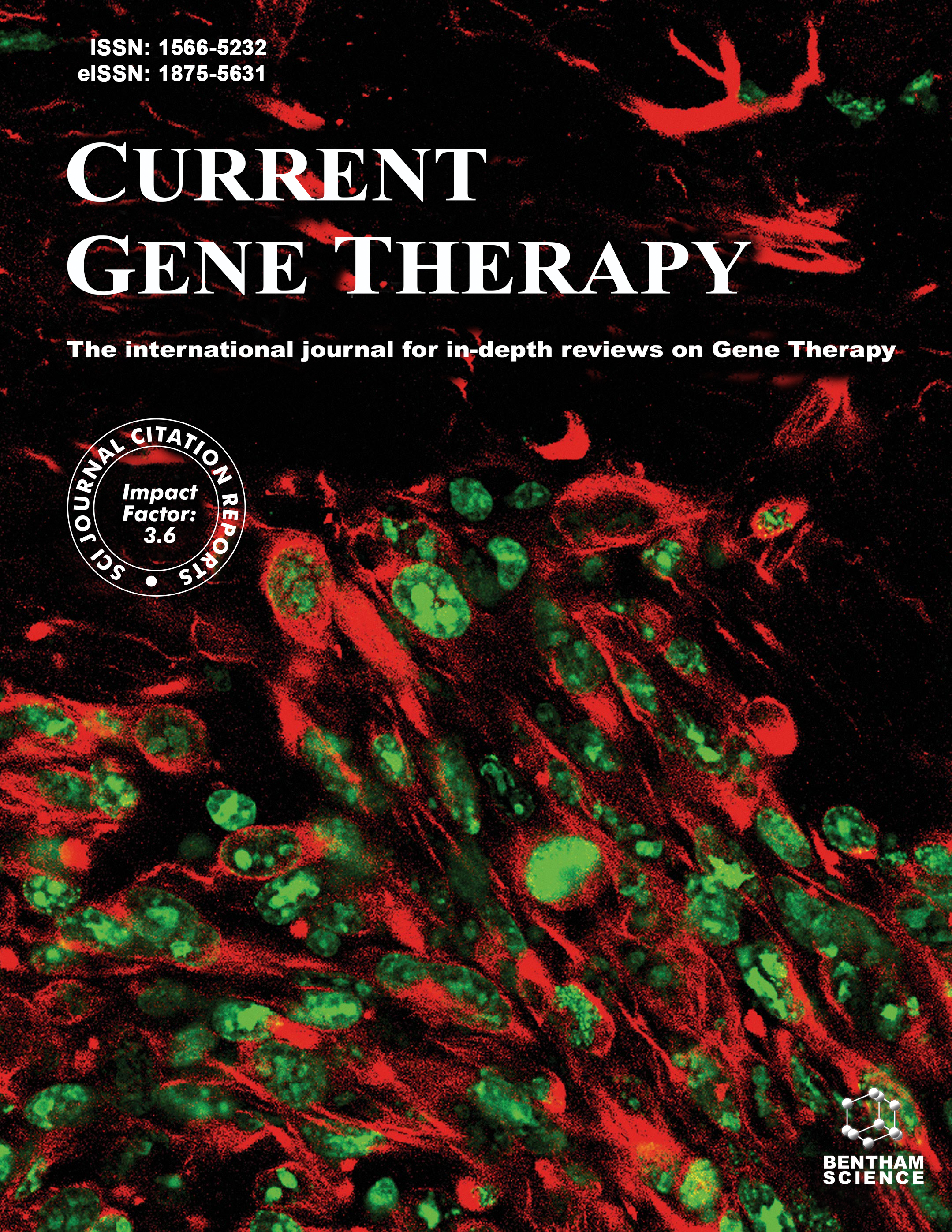- Home
- A-Z Publications
- Current Gene Therapy
- Previous Issues
- Volume 14, Issue 3, 2014
Current Gene Therapy - Volume 14, Issue 3, 2014
Volume 14, Issue 3, 2014
-
-
Editorial (Thematic Issue: The Coming of Age of DNA Vaccines)
More LessConventional immunization approaches utilize live attenuated pathogens, inactivated organisms, recombinant proteins or polysaccharide antigens to induce protective immunity. Twenty years ago in a major breakthrough it was shown that immune responses could instead be elicited by injecting plasmid DNA encoding relevant vaccine antigens [1-3]. This heralded the start of DNA vaccination. DNA vaccines offer many potential ad Read More
-
-
-
Advances and Challenges in the Development of Therapeutic DNA Vaccines Against Hepatitis B Virus Infection
More LessBy Lucyna CovaDespite the existence of an effective prophylactic vaccine, chronic hepatitis B virus (HBV) infection remains a major public health problem. Because very weak and functionally impaired virus-specific immune responses play a key role in the persistence of HBV infection, the stimulation of these responses appears to be of particular importance for virus clearance. In this regard DNA-based vaccination has emerged as novel, pro Read More
-
-
-
Plasmids Encoding Protein Aggregation Domains Act As Molecular Adjuvants for DNA Vaccines
More LessBackground: DNA vaccines provide high tolerability and safety but commonly suffer from suboptimal immunogenicity. We previously reported that a plasmid vector (pATRex), encoding the DNA sequence for the von Willebrand I/A domain of the tumor endothelial marker-8 (TEM8) when given in combination with plasmid-encoded tumor antigens acted as a powerful molecular adjuvant enhancing immunity against breast and mel Read More
-
-
-
Improving DNA Vaccine Performance Through Vector Design
More LessDNA vaccines are a rapidly deployed next generation vaccination platform for treatment of human and animal disease. DNA delivery devices, such as electroporation and needle free jet injectors, are used to increase gene transfer. This results in higher antigen expression which correlates with improved humoral and cellular immunity in humans and animals. This review highlights recent vector and transgene design innovations Read More
-
-
-
BTX AgilePulseTM System is an Effective Electroporation Device for Intramuscular and Intradermal Delivery of DNA Vaccine
More LessDNA vaccines promote immune system activation in small animals and exhibit certain advantages when compared to conventional recombinant protein vaccines. However in clinical trials DNA vaccines are less effective in inducing potent immune responses due to the low delivery efficiency and expression of antigens. Currently, various delivery devices such as gene-guns, bioinjectors and electroporation systems are being us Read More
-
-
-
A Hantavirus Pulmonary Syndrome (HPS) DNA Vaccine Delivered Using a Spring-powered Jet Injector Elicits a Potent Neutralizing Antibody Response in Rabbits and Nonhuman Primates
More LessSin Nombre virus (SNV) and Andes virus (ANDV) cause most of the hantavirus pulmonary syndrome (HPS) cases in North and South America, respectively. The chances of a patient surviving HPS are only two in three. Previously, we demonstrated that SNV and ANDV DNA vaccines encoding the virus envelope glycoproteins elicit high-titer neutralizing antibodies in laboratory animals, and (for ANDV) in nonhuman primates (NH Read More
-
-
-
Progress of In Vivo Electroporation in the Rodent Brain
More LessAuthors: Xue-Feng Ding, De-Lin Ma, Qiang Zhang, Wei Peng, Ming Fan and William Z. SuoIn vivo electroporation is one of the most efficient methods for introducing the nucleic acids into the target tissues, and thus plays a pivotal role in gene therapeutic studies. In vivo electroporation in rodent brains is often involved in injection of nucleic acids into the brain ventricle or specific area and then applying appropriate electrical field to the correct area. Better understanding of the progress of electroporation in rodent Read More
-
-
-
Heme Oxygenase-1 as a Target for the Design of Gene and Pharmaceutical Therapies for Autoimmune Diseases
More LessOne of the major goals in the research of autoimmune diseases is to develop specific therapies to regulate the expression and function of gene products that could contribute to restoring tolerance to self-constituents and replace conventional systemic immunosuppression, which is associated with important undesired side effects. Although significant progress has been made on the understanding of the pathogenesi Read More
-
-
-
A Suicide Gene Therapy Combining the Improvement of Cyclophosphamide Tumor Cytotoxicity and the Development of an Anti-Tumor Immune Response
More LessGene-directed enzyme prodrug therapy (GDEPT) consists in targeted delivery to tumor cells of a suicide gene responsible for in situ conversion of a prodrug into cytotoxic metabolites. One of the major limitations of this strategy in clinical application was the poor prodrug activation capacity of suicide gene. We built a highly efficient suicide gene capable of bioactivating the prodrug cyclophosphamide (CPA) by fusing a CYP2B6 tr Read More
-
Volumes & issues
-
Volume 25 (2025)
-
Volume 24 (2024)
-
Volume 23 (2023)
-
Volume 22 (2022)
-
Volume 21 (2021)
-
Volume 20 (2020)
-
Volume 19 (2019)
-
Volume 18 (2018)
-
Volume 17 (2017)
-
Volume 16 (2016)
-
Volume 15 (2015)
-
Volume 14 (2014)
-
Volume 13 (2013)
-
Volume 12 (2012)
-
Volume 11 (2011)
-
Volume 10 (2010)
-
Volume 9 (2009)
-
Volume 8 (2008)
-
Volume 7 (2007)
-
Volume 6 (2006)
-
Volume 5 (2005)
-
Volume 4 (2004)
-
Volume 3 (2003)
-
Volume 2 (2002)
-
Volume 1 (2001)
Most Read This Month
Article
content/journals/cgt
Journal
10
5
false
en

Most Cited Most Cited RSS feed
-
-
New Hope for Intervertebral Disc Degeneration: Bone Marrow Mesenchymal Stem Cells and Exosomes Derived from Bone Marrow Mesenchymal Stem Cell Transplantation
Authors: Xiao-bo Zhang, Xiang-yi Chen, Jin Qi, Hai-yu Zhou, Xiao-bing Zhao, Yi-cun Hu, Rui-hao Zhang, De-chen Yu, Xi-dan Gao, Ke-ping Wang and Lin Ma
-
- More Less

